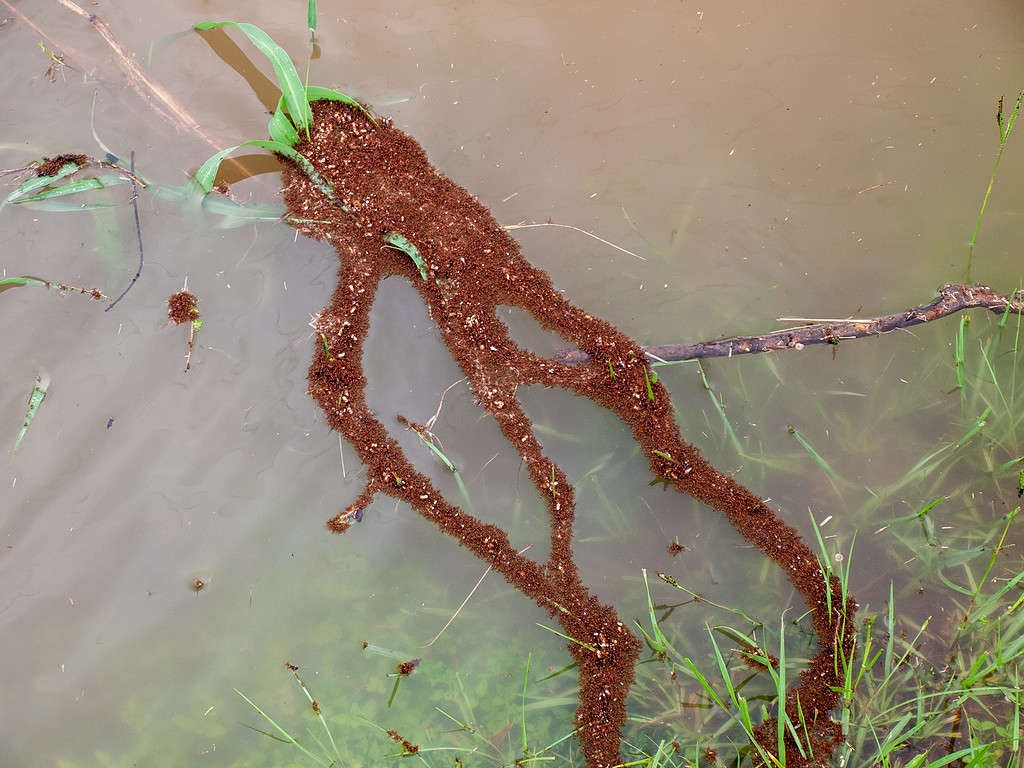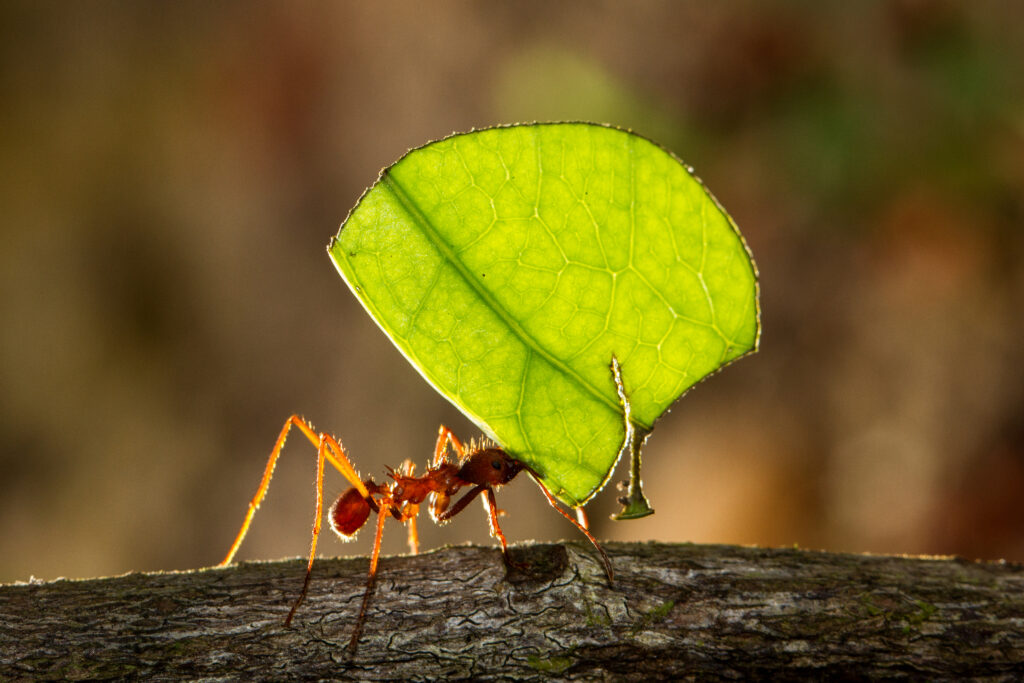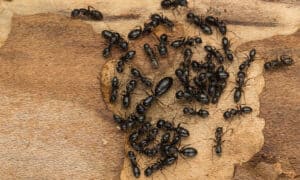Most people wouldn’t consider ants to be incredible creatures. However, they do some amazing things in the name of survival. This video shows fire ants that have formed a raft to save their colony. In the jungles of the Amazon, floods threaten their survival. The ants adapted to this natural disaster and developed a life-saving strategy. One study found that the ant raft forms through the growth of protrusions that serve as tethers to hold the raft together. An article by Ant Lab shows the buoyancy of the ants within the water and how the bottom layer of ants holds the rest afloat. They also report that the exoskeleton of fire ants is slightly hydrophobic (a term meaning “tending to repel water”).
Watch the Incredible Ant Raft Footage Below!
Let’s learn about some more awesome ant behaviors!
Ants Store Extra Food For Others
While an ant raft is very cool, ants also do other things to ensure the survival of the colony. This includes storing extra food in a second stomach for hungry nest mates. When one ant has food stored and another ant signals they are hungry, the first can basically throw up the extra food. Then, the other can eat. This adaptation is all about making sure that all the ants survive!

Fire ants create rafts to protect their colonies during flooding.
©Tim Bingham/iStock via Getty Images
In some colonies, majors (or very large bodied ants) take on the role of food storage for the colony. These any stay deep within the colony and basically wait to be needed. Worker ants bring them food such as honey, nectar, bodily fluids, or fat. The so-called honey pot ants become too large to move. They simply sit and wait until food becomes scarce. Then, the other ants stroke them with their legs and the majors regurgitate some of their food.
Honey badgers often wreck ant colonies in search of these honey pot ants. Some humans also search ant colonies for these sweet treats in parts of Australia and the Amazon.

Leafcutter ants farm fungus within the colony to feed themselves.
©Ken Griffiths/Shutterstock.com
Farmer Ants
If forming ant rafts and feeding others in times of need wasn’t enough, some ants even farm their own food. Leafcutter ants learned to farm the type of fungus (Leucoagaricus gongylophorus) they exclusively feed on in order to ensure the health of the colony. When a queen leaves her colony, she carries a bit of the fungus with her. Another study tells us the queen tends the newly laid fungus crop until her worker ants hatch and take over the job. In fact, these ants express polymorphism (or changes in appearance). In this case, that means that smaller ants tend to the garden while larger ants defend the colony. Sometimes, this is a genetic effect. Other times, the growth in size of the ants is based on the needs of the colony. The farmer ants protect the garden and keep out foreign materials and organisms. The garden feeds the entire colony, so it must be carefully attended.
Thank you for reading! Have some feedback for us? Contact the AZ Animals editorial team.








